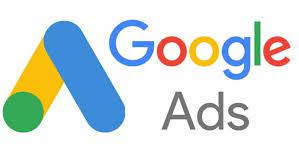Google guarantees online safety for its billions of users. According to its 2022 Advertising Safety Report. The tech giant removed 5.2 billion ads, limited 4.3 billion ads, and suspended 6.7 million advertiser accounts.
In 2022, 2 billion more ads will be eliminated. “We also prohibited or limited advertisements from serving on over 1.5 billion publisher pages and conducted broader site-level enforcement action on over 143,000 publisher sites,” said Alejandro Borgia, Director, Product Management, Ad Safety.
In 2022, Google amended 29 policies for advertisers and publishers, including expanding its financial services verification programme to 10 new countries, protecting adolescents, and tightening election ads.
The Advertising Transparency Centre, a searchable database of verified advertisers across search, display, and YouTube, was released today by the app company.
Read also: Uk-Nigeria Tech hub, Google partner to uplift African women tech founders
Why were the ads blocked on Google?
According to the analysis, Google rejected 5.2 billion ads utilizing sixteen policies last year. Trademark and legal obligations deleted 562 million and 343 million ads, respectively, while abusing the ad network removed 1.3 billion. Financial Services (198 million), Misrepresentation (142 million), Gambling and Gaming (136 million), and Adult Content (136 million) are other categories (129 million).
Healthcare and Medicines (96 million), Copyrights (83.7 million), Inappropriate Content (51.2 million), Hazardous Products or Services (20.6 million), The War in Ukraine (17 million), Promoting Dishonest Behavior (12.5 million), Alcohol (9.2 million), and Counterfeit Goods (9.2 million) (1.3 million).
Many regulations restrict over 4.3 billion advertisements. Google says these policies “cover content that is sometimes legally or culturally problematic.” Restrictions allow limited promotion of advertisements, unlike blocks.
The Restricted Businesses policy restricted 550 million advertisements, 503 million for failing to satisfy local legal standards, and 237 million for financial services. Adult Material (163 million), Gambling and Gaming (130 million), Healthcare and Medications (124 million), Copyrights (83.4 million), and Alcohol (83.4 million) (55 million).
In 2022, Google penalized 1.57 billion pages for publisher content in 10 categories, including 1.15 billion for sexual content, 116 million for disparaging content, and 110 million for weapons promotions and sales.
Tobacco and online gambling were banned on 35 million and 30 million pages, respectively, while shocking content affected 59 million pages. Malicious or unwanted software (4.5 million), sexually explicit content (4.5 million), and intellectual property abuse (11.5 million) are others (2.5 million).
Ad experience is crucial for Google
Borgia claims Google is “committed to leading the industry in offering users more information about the advertisements they see and putting them in control of their ad experiences” in addition to existing regulations and enforcement.
The company’s global advertising identity verification programme, launched in 2020, requires marketers to validate their firms, locations, and products or services.
The business introduced My AdCenter last October to enable consumers to control the advertising they see, limit sensitive ads like alcohol, dating, weight loss, gambling, and pregnancy, and discover more about the information used to tailor their ad experience across Google Search, YouTube, and Explore. In the first three months following its debut, Google reported over 70 million My Ad Centre visits.
Google has increased its election ad verification and transparency programme, verifying over 5,900 new U.S. and 2,300 new Brazilian advertising accounts. Almost 2.6 million political advertisements from unverified advertisers were blocked.
